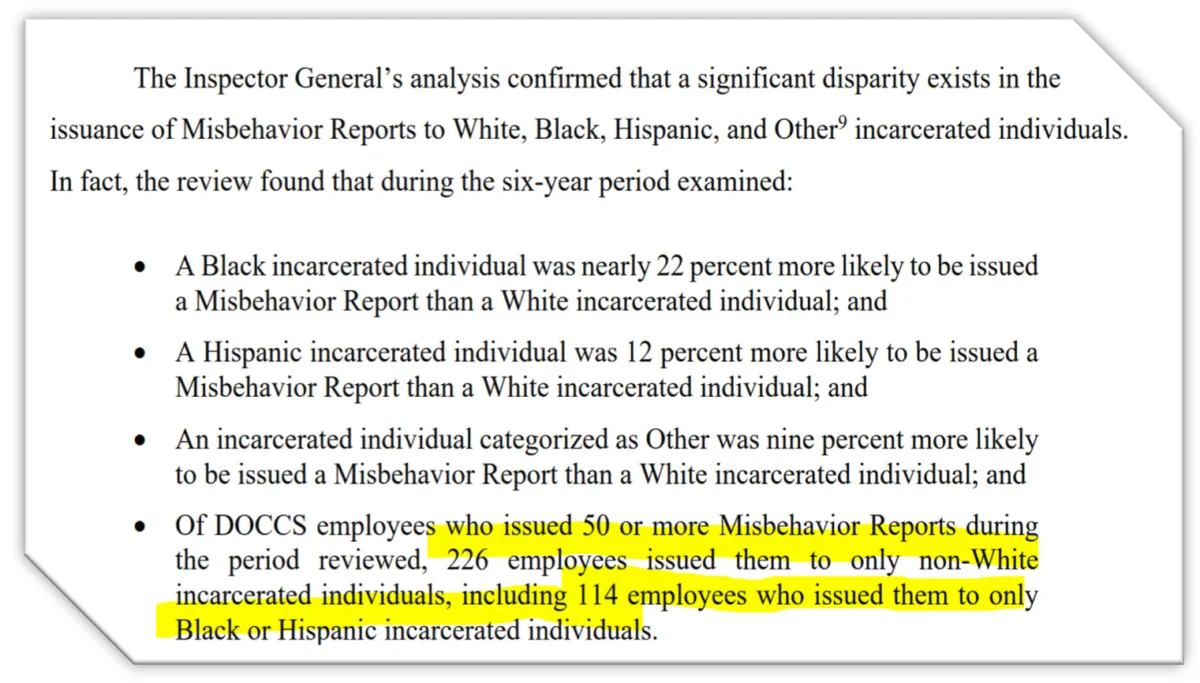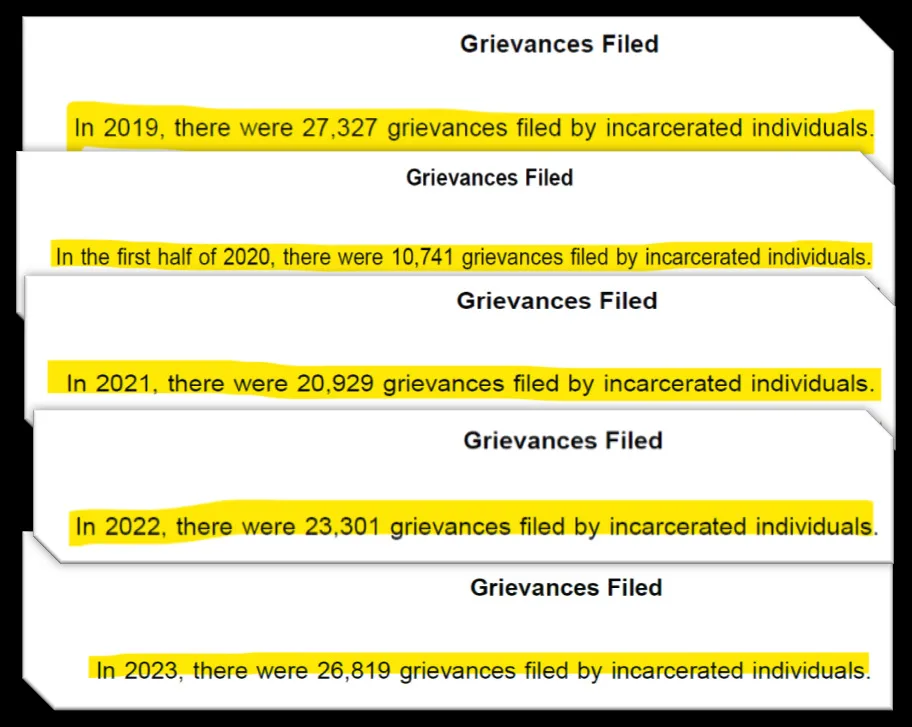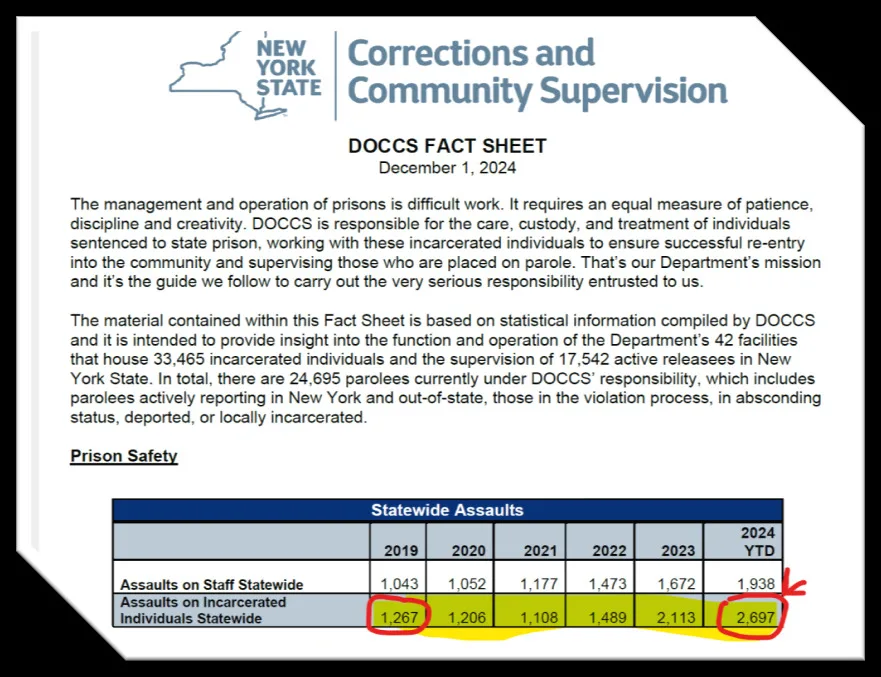Voices
The Murder of Robert Brooks Shines a Light on Abuse and Racism in New York Prisons
Brooks’s murder by prison guards epitomizes a deeply ingrained culture of brutality perpetuated by New York’s refusal to hold staff accountable.

The brutal murder of Robert Brooks at Marcy Correctional Facility starkly exposes the systemic failures festering within the New York State Department of Corrections and Community Supervision (DOCCS). Brooks spent over seven years in a system defined by dehumanization. His sentence was meant to be his punishment—prison was never meant to be a death sentence.
Brooks was more than his charges. He was a beloved son, a cherished family member, and a man with a future. His family should have been celebrating his return and the possibility of a new beginning. Instead, they now mourn his death, burying him during the holidays, their joy stolen by a haunting injustice.
Robert Brooks’s life ended at Marcy Correctional Facility—a prison infamous for its entrenched racism and unchecked brutality. With a staff that is 92 percent white, Marcy has become a breeding ground for violence, racial slurs, and excessive force. Brooks’s murder at the hands of over a dozen prison staff epitomizes a deeply ingrained culture of brutality perpetuated by DOCCS’s refusal to hold staff accountable.
DOCCS leadership, from Central Office in Albany to superintendents, cannot dismiss this tragedy as an isolated incident. Marcy is not an anomaly. Nor can they deny they are complicit in Mr. Brooks’s death.
All evidence at DOCCS’s disposal sounded urgent alarms: a recent Inspector General report laid bare the deeply entrenched racism within the system, a surge in grievances highlighted growing unrest, and assaults on incarcerated individuals soared at an alarming rate. Shockingly, even as the prison population declined, these indicators rose steadily and relentlessly.
Evidence from the Inspector General’s office in 2022 confirms systemic racism, with more than 200 DOCCS employees issuing 50 or more misbehavior reports exclusively against non-White individuals, including over 100 who targeted Black or Hispanic individuals alone. These “disparities,” the report found, “were not confined to only a few facilities, nor were they confined to ‘a few bad apples’ among DOCCS employees in any given facility.” Shockingly, these employees remain shielded, their identities concealed, and disciplinary actions absent.

Further, prison areas infamous among incarcerated people like Elmira’s “Vietnam,” Fishkill’s “Up the Hill,” Green Haven’s “Eastside,” Attica’s “A Block,” and Clinton’s “The Tunnel” embody the legacy of systemic racism and brutality that permeates DOCCS facilities. Equally damning is DOCCS’s practice of transferring nonconforming individuals to “whipping post” facilities like Coxsackie Correctional Facility, notorious for its rampant violence. Minor infractions, such as speaking in a hallway, often lead to brutal force, called “hands and feet” by incarcerated people.
Despite Governor Kathy Hochul’s claims that “the vast majority of correction officers do extraordinary work under difficult circumstances,” the data tells a different story. In 2023, grievances filed by incarcerated individuals surged to a staggering 26,819, exposing systemic failures ranging from inadequate programs to critical health care lapses. Most damning are the 3,220 grievances citing staff misconduct, shattering the myth that abuse is limited to a few rogue individuals. These grievances are not mere complaints but urgent pleas for help from people trapped in a system that prioritizes cruelty over accountability.

This crisis is further underscored by DOCCS’s 2024 fact sheet and its ten-year Unusual Incident Report, both of which reveal that assaults on incarcerated individuals in New York State prisons have nearly doubled over the past decade. This alarming trend exposes a culture where violence is not an exception but an institutionalized norm. While these reports provide data on general assaults, they omit information on assaults committed by correctional staff against incarcerated individuals. This exclusion raises serious concerns about the oversight of staff conduct and the system’s commitment to transparency and accountability.

These reports and annual indicators were explicitly designed to empower DOCCS and its superintendents to monitor the prison population’s pulse, address injustices, and resolve disputes. The historical absence of such tools directly fueled the explosive discontent that ignited the Attica uprising. With the DOCCS commissioner and executive team regularly leveraging statistics to their advantage, their blatant disregard for these warning signs exposes a deliberate and undeniable complicity in sustaining the very conditions these mechanisms were meant to address.
The brutal treatment of Robert Brooks only gained attention because of silent body cams capturing the incident. Without this evidence, his death might have been swept under the rug, leaving his family, like countless others, with unanswered questions.
Governor Hochul’s declaration, “The system failed Mr. Brooks, and I will not be satisfied until there has been significant culture change,” rings hollow when contrasted with her tepid reforms that merely funnel more money into an intentionally broken system while failing to hold DOCCS Commissioner Daniel F. Martuscello III, accountable—a long-standing insider with over two decades in the system. Making the Marcy superintendent the scapegoat by replacing him is nothing more than rearranging the furniture, leaving the systemic failures untouched.
With a 40-percent recidivism rate, outdated programs leaving the majority of individuals unemployed after 12 months post-release, a halved prison population, a $3.5 billion budget—the nation’s second-highest—and a 1-to-2 staff-to-incarcerated ratio exceeding the 1-to-4 average, more funding is clearly not the solution. To deny these intentional failures is to deny justice for Robert Brooks and every individual subjected to this inhumane system.
Real change demands decisive action, not empty rhetoric. Robert Brooks’s brutal death lays bare the urgent and undeniable need for sweeping reform within New York’s broken correctional system. Justice has been shamefully delayed— a month has passed, and not a single arrest has been made. If this tragedy had occurred within any other community or ethnicity, the response would likely have been swift and decisive. This delay reflects a glaring disregard for Black and Brown lives and highlights the pervasive inequalities entrenched in our institutions at every level.
Enacting the Rights Behind Bars (S.7772/A.8364) bill would directly target the culture of impunity that allowed correctional staff to act without accountability, as seen in the tragedy at Marcy Correctional Facility. Holding those responsible for Mr. Brooks’s death accountable and passing this bill is not optional—it is the bare minimum required to restore justice, dignity, and humanity within a system that has long been overdue for transformation. Anything less is a profound betrayal of our shared commitment to fairness, equality, and the fundamental principles of justice.
Anthony Dixon is the Deputy Director of Parole Preparation Project, a nonprofit organization dedicated to advocating for and supporting individuals serving life sentences and those transitioning home from New York prisons. Drawing from his 32 years of lived experience in New York State prisons, Anthony offers a unique and invaluable perspective in his work.
In 1990, Anthony was instrumental in a landmark class-action racial discrimination lawsuit that exposed blatant systemic racism in housing assignments, disciplinary actions, and program preferences favoring white individuals in the New York State prison system. The case garnered national attention after six incarcerated individuals, including Anthony, were brutally beaten by 40 prison guards in retaliation for their testimony.
